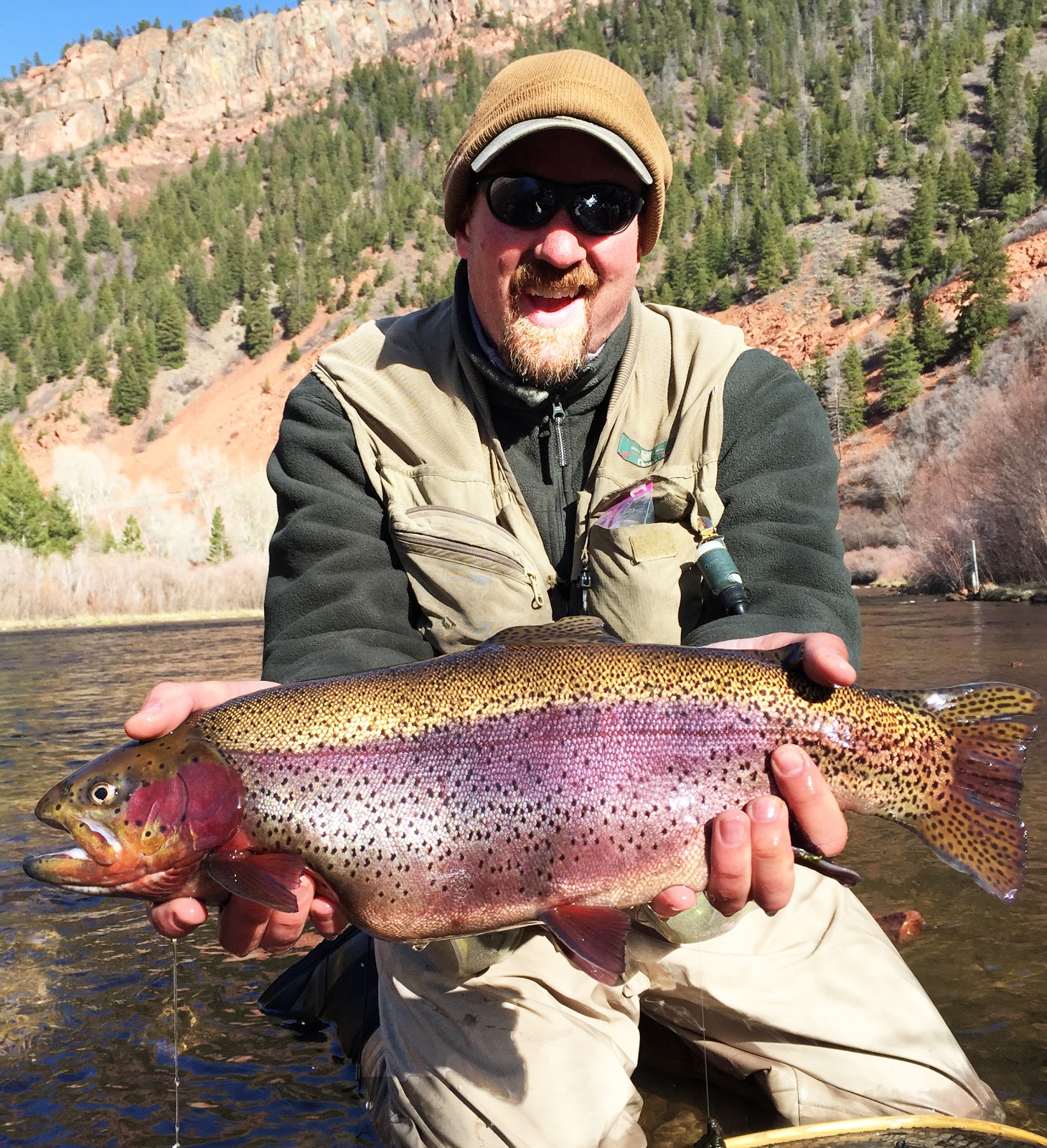
Trout Smart Series: An Insider's Look at Catching Rainbow Trout on the Fly

A rosy cheeked rainbow caught by Nate K.
The grainy footage was captured on our family’s shoulder-mounted Panasonic Camcorder, technology so old that its probably come back into style with the kids wearing tight jeans and ironic mustaches. Hopping next to a pond on that Smoky Mountain morning, a towheaded kid fills the frame as he struggles to hold onto his 10’ cane pole and what was assuredly the biggest catch of his young life. With a final heave, a confused and defeated rainbow trout was hoisted into the air and displayed to the camera. The pride and excitement of that moment echos through the years, and was the spark that lit my love for trout and passion for fishing. My guess is that this story may have resonated with many of you, bringing you back to the ponds and creeks of your youth and your first trout: the beloved and always eager rainbow trout.
In Part II of our Trout Smart series, we will be breaking down a familiar friend, the most abundant of North American trout: Oncorhynchus mykiss, the Rainbow Trout.
Identifying Characteristics:

Like a trendy new version of “riverbed camo” seen in the pages of the Cabela’s catalog, the heavily spotted back, tail, dorsal, and adipose fins of the rainbow trout help it to blend into the rocks and gravel over which they swim. Often mistaken for a softly swaying aquatic plant or clump of algae when viewed from above, it can be the white flash of their mouths opening to take a bit of drifting food that gives them away. When finally netted and brought to hand, you will see the distinctive pink or red stripe running the length of their side and cheek, the defining characteristic from which this trout species gained its rainbow moniker.
Range & Habitat:
Due to this species’ hardiness, their ability to survive in a wide range of water temperatures (they are able to survive in water temperatures up to 77° F), and the ease of raising them in a hatchery setting, Rainbow trout are the most abundant and heavily-stocked trout species in the United States. Found in all 50 states and Puerto Rico, Rainbow trout can be aptly compared to cattle raised in factory feedlots. Hatchery grown rainbows are raised for size, and are for the most part sterile (the rationale being that in sterilizing hatchery fish, this will protect the genetics of wild fish and enable these cattle of the aquatic world to focus their energy on growing big, fast!). Equally adept at surviving and thriving in both lakes and rivers, the habitat preference of the rainbow make them relatively easy to approach and catch on a fly. Driven by the desire for high calorie foods and lots of it, rainbow trout favor riffles and don’t mind wandering far away from the large cover and deep pools that Brown and Brook trout prefer.
Feeding Behavior & Foods:
Aquatic insects make up the lion’s share of the rainbow trout’s diet throughout its life. Midges, mayflies, caddisflies, and stoneflies each take their turn at the top of the menu, while terrestrial insects, minnows, and crayfish act more like appetizers and enter the diet of larger trout around age three. When looking at stomach samples of rainbow trout, it is common to find small bits of algae and aquatic plants which are consumed in the trout’s pursuit of sheltering invertebrates. Accused of thinking with their stomach more than their heads, rainbow trout feed with less caution than other species, and individual fish can often be hooked several times per day. When hooked, rainbow trout employ a couple of tactics. When your fly bites back, rainbows will often head for fast current, using their body like a parachute to harness the power of the river and apply maximum pressure to your leader. Their other trick is to go airborne, leaving the water like an ICBM launched from a submarine. This quick quick change in direction and explosive movement creates a quick, line-snapping force and has set more trout free than your state’s department of wildlife!
Vulnerabilities:
- They think with their stomachs - Given a decent approach & drift as well as some smarts in the matching-the-hatch department, you should be able to tempt almost any rainbow into snapping at your flies. With a short memory for the pain of previous hooks and an insatiable desire to feed, add a little flash in your fly patterns by using metal beads, wire wraps, or shiny material; like a moth drawn to a flame, the rainbows in the river will give your fly a taste.
- Proven responses for predictable tactics - Rainbow trout don’t have many moves when it comes to getting off the line, and the angler has a proven playbook for countering these moves. When the trout runs into current, drop your rod tip parallel with your bank and apply a steady, even pressure using the entire length of your rod. The added sting of this pressure will cause the rainbow to relent and work its way back to your bank and move upstream to lessen the bite of the hook. When the trout jumps, we momentarily release the pressure on our leader by dipping the tip of our rod to the water, before reestablishing a low rod and steady side-pressure once the trout reenters the water.
- They like em’ sunny-side-up - Like all trout, when there are fish eggs in the water, rainbows lose their little fishy minds! While not above poaching the eggs of other rainbows (Egg Puns!), they will also aggressively feed on sucker eggs in the spring, and brown or brook trout eggs in the fall. Eggs fill their dreams, so when the spawn is on, drop egg patterns!


